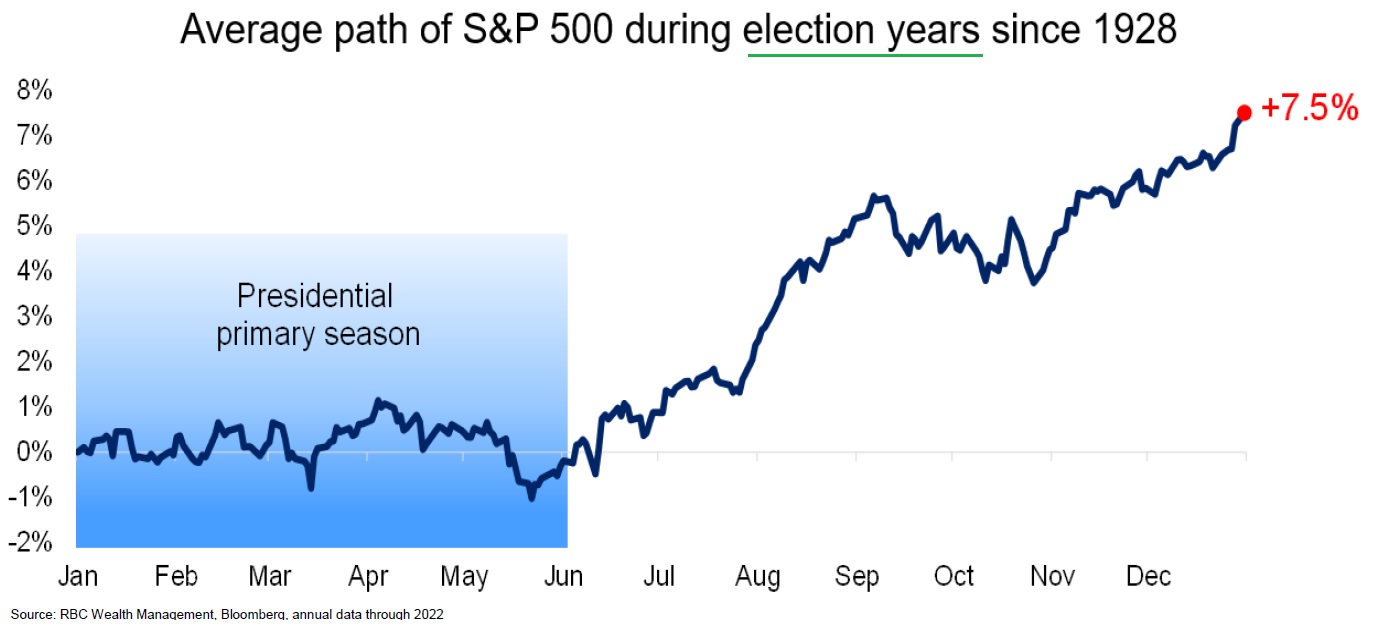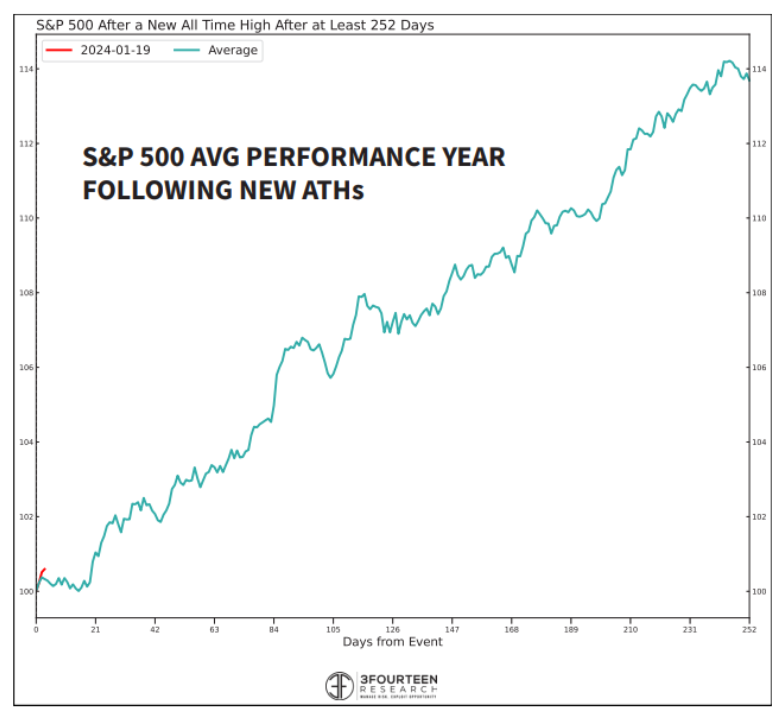To start the year, markets have surprised investors with positive momentum that carried over from 2023. The consensus from many strategists was for the first half of the year to face more negatively biased volatility and for the second half to bring upon positive returns. Afterall, as shown below, this fits the average historical pattern of stock market performance during election years.

It is too early to dismiss this historical pattern, although one could argue that the market does not appear to be interested in politics yet. Perhaps this is because the 2024 Republican Primary, which officially began in mid-January and will last through June, does not seem to be as dramatic with most pundits expecting Mr. Trump to secure the nomination. Or perhaps the uncertainty surrounding the primaries have been reduced with the indefinite postponement of the federal trial that charged Mr. Trump of conspiring to overthrow the 2020 election results. Or even perhaps the impact on the market from the election will be tempered with the possibility of a divided government that would likely produce a gridlock to new policies regardless of who wins the presidency.
Ultimately, the market seems to be laser focused on other primary issues including inflation and interest rates. There will come a day when investors do not treat Fed press conferences as ‘must-see TV’; unfortunately, that time is not now. Until that changes, the Fed and it’s perception of inflation is all that should matter to investors.
At the time of this writing, the market is experiencing it’s first ‘test’ of the year after receiving a hotter than expected January CPI print. In the short term, bears and bulls will battle for airtime, with some trying to explain the inflation print away with ‘seasonal’ factors that unduly influenced CPI and others arguing that a pullback is more than “due”. At this juncture, investors are encouraged to pause and take stock of what markets are attempting to reprice. The market initially believed the Fed would cut interest rates 6-7 times beginning as early as March. This expectation has now been adjusted to 3-4 cuts starting closer to the second half the year. We feel this lowered amount of rate cuts is a more accurate expectation and a potential sweet spot for the Fed’s path to normalization. Hence, although investors may not enjoy pullbacks, there is such thing as “productive volatility” when overexuberant expectations are brought back in line. If the market can still hover near all-time highs, while the market slashes rate cut expectations and with the 10 yr treasury spiking from 3.88% to 4.31%, we believe this could be interpreted as a victory for the bulls.
Our base case remains for 2024 to be positive year for stocks. This will likely remain our view so long as three conditions remain: 1) inflation stays on a downward trend, 2) the fed stays on track to cut rates, and 3) corporate earnings growth continues. We are also emboldened with the historical data depicted in the chart below. The figure shows that when the market takes more than year to achieve new all time highs, the average performance of the market is quite strong for the next 12 months. Said another way, it is a “bullish” signal when it takes more than a year to achieve new highs. Historically, the 1 year forward gains are on average +14%.

The prospects of heading towards a period of volatility may be increasing. However, with a tremendous amount of cash on the sidelines and low levels of margin debt, this market does not appear overextended for long term investors. We recommend investors to position themselves for a fed rate cutting cycle to occur in the back half of this year. Speak to you advisor regarding your portfolio positioning.
